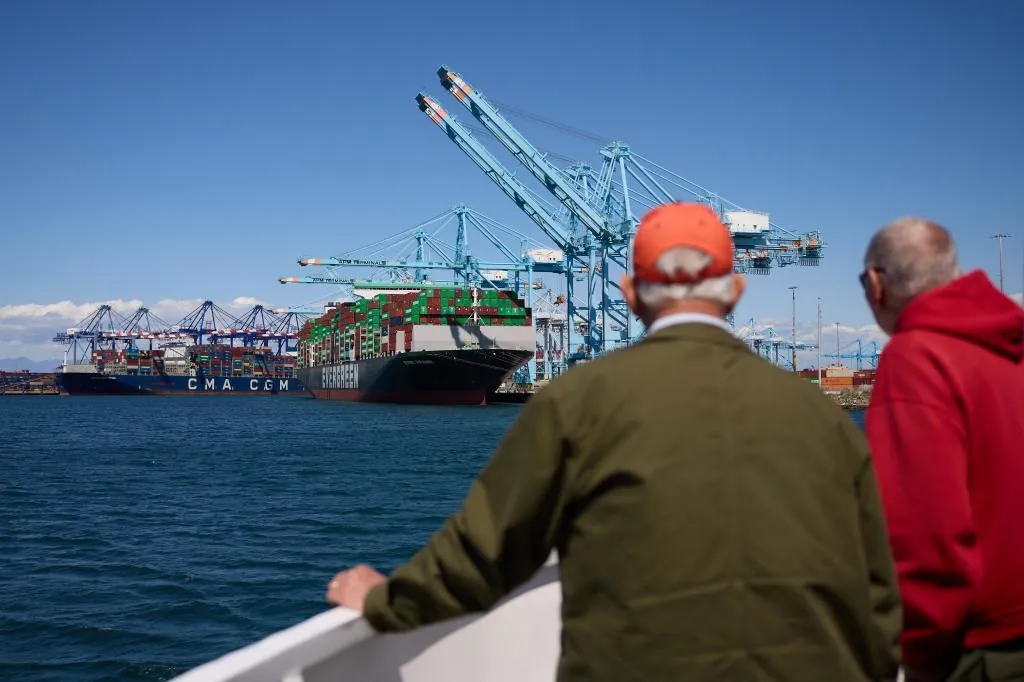Donald Trump He has never been in favor of a strong dollar. Although the strength of a currency is usually interpreted as a sign of economic power, it seems that for Trump it could represent an obstacle. In this, as well as in his previous presidency, has publicly criticized several times to Federal reserve for keeping the dollar “too high.”
In the background, it is not crazy think that weakening the dollar is one of the hidden goals“Or perhaps not so hidden since he has pointed out,” Trump to climb his commercial rhetoric and put the world in suspense with new tariff threats.
Every time the idea of a Commercial War Or barriers have been announced to imports, currency markets have reacted with volatility and the dollar has weakened in front of the euro.
As the evolution of the exchange rate shows from Trump’s investiture, that day 0.97 euros were needed to buy a dollar. Last Thursday, only 0.90. And although it might seem positive -a strong euro -, It actually harms the European export sector and the entire assets and services industry that supports it.
How could a weak dollar favor the United States economy?
That movement, although it seems collateral, ends up playing in favor of the economic interests that Trump defends: a weaker currency that stimulates US exports and reduces the goods and services that arrive from the outside. That is to say that the trade deficit from the United States decreases considerably without necessarily American products and services being more competitive
And Strong dollar increases US products abroadwhile a weak dollar -what potentially wants Trump -Los Comarata.
Let’s put a simple example: if a company of Ohio Sell tractors a Space And the dollar is expensive, Your machines are more expensive for your European client. On the other hand, if the dollar weakens, these tractors will cost less in Spain and the North American manufacturer will receive the same amount for its tractor. It sells cheaper in Spain but receives the same income in the United States. Trump knows it and that is why, by weakening the dollar, he seeks to stimulate exports, boost national production and reduce the commercial deficit, which considers a symbol of “economic weakness.”
A cheapest dollar also makes exports of European products to the USwhich in the short term can benefit the American industry. If a Chinese or European product, due to the exchange rate, begins to cost more in the US, American consumers can opt for goods, who have not increased and are manufactured within their country. This not only favors employment in sectors such as American industry or agriculture, but reinforces the narrative of the “America First” that Trump has used as a political flag. In summary: export more, import less and reindustrialize the US.
Its effects in Europe
But this strategy, designed to benefit US, has important side effects in other regions of the world. Especially in Europe, whose currency – the Euro – can be seen when the dollar weakens. And this, far from being good news, poses several problems.
When the euro is strengthened against the dollar, lEuropean products become more expensive in international markets. Companies that sell outside the eurozone, such as car manufacturers, machinery, chemicals or food, lose competitiveness. If a liter of Spanish olive oil cost 10 dollars in the US, now it could cost 11 if the dollar weakens 10%. That is, by Only due to the exchange rate the European product loses competitiveness in the market outside the eurozone.
Repercussions for tourism in Spain
One of the most sensitive sectors to the weakening of the dollar is tourism. If the US currency loses value against the euro, American visitors are reduced their expenditure capacity in Europe. COn each American dollar get less euros to spend during their trip. This automatically increases their stay: hotels, meals, transport, leisure and purchases cost them more.
In 2024, this sector generated more than 207,000 million euros and contributed approximately 13.1% of national GDP, according to Exceltur data. An important part of that income comes from foreign visitors, including a Increasing number of American tourists (more than 4.2 million in 2024 according to the INE), known for its high level of spending. In a country where tourism holds millions of indirect jobs and economic activities, the effect of a weaker American currency is not less.
In addition, many European companies, including Spanish exporting SMEs, work with tight margins. A loss of competitiveness due to the exchange rate can cause these margins to disappear. It is not a matter of great monetary theories: it is a reality that directly affects the income of thousands of companies.
The panorama is not entirely negative: there are some benefits
Now, Not everything is negative for Europe. One dWeak crisp acacas imports of raw materials that are quoted in that currency, such as oil or gas. This can help reduce energy costs, something especially relevant after the price crisis lived in recent years. It can also serve to contain inflation at a time when prices have hit European households strongly.
Even so, the balance is not entirely favorable. Because while Europe can benefit from certain sales in its energy bills, it suffers from the loss of competitiveness of its productive fabric, and for the possible slowdown in strategic sectors such as tourism, food or automotive.
Trump, with his actions and statements, makes it clear that he does not see the dollar as a symbol of national strength, but as a tool to reposition the United States in the global economy. Everything indicates that if weakening the currency helps its exporters, its industry and their political discourse, will not hesitate to push in that direction. In this context, we may be looking too much at the headlines on tariff
